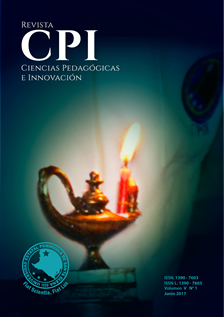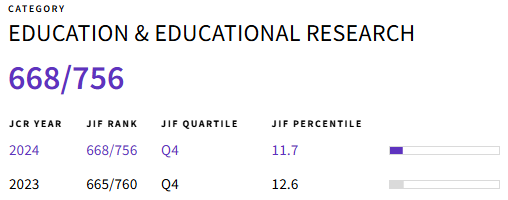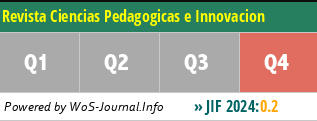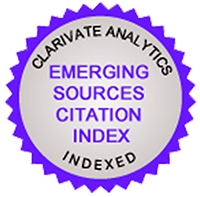Treatment of non-payments under the approach of the suspense with the application of neural networks(case of artisans of footwear Gualaceo Canton Province of Azuay)
DOI:
https://doi.org/10.26423/rcpi.v5i1.155Keywords:
Footwear, expertizaje, non-payments, diffuse logic, neural networksAbstract
One of the most serious problems that the micro companies and companies cross in our country, is recounted to the problem of the non-payments in financiering. This article tackles the different actions directed to the recovery of a non-payment by means of the use of theory of the expertizaje to feed a counterfoil of forgotten effects that allows to take decisions and serves like design instrument to represent the politics of management of every company in the different actions to take, it is the case of study of the craftsmen of footwear of the canton Gualaceo Provincial of the Azuay, where a suitable politics of managerial management does not exist for the non-payments recovery on the part of clients of its products. A graph representative of this politics will be indicated step by step to execute in the payments slowed down on the part of clients or other organizations with the company of footwear, justifying every arch by means of the use of the neural network analysis. Once known the existence of the non-payments applies the expertizaje to itself to construct the counterfoil of convolución that allows to discover the actions that have been forgotten and that the management will have to attack to be able to be successful in the recovery of the not processed recoveries.
Downloads
References
Kaufmann A, GilJ. Modelos para la investigación de efectos olvidados. Barcelona: Milladoiro; 1989.
PérezF, Fernández H. Las redes neuronales y la evaluación del riesgo de crédito. Revista Ingenierías Universidad de Medellín [Internet] 2007; 6(10): 77-91. http://www.redalyc.org/articulo.oa?id=75061007(último acceso 03 octubre 2016).
Nebendah D. Sistemas expertos. Ingeniería y comunicación. Barcelona: Editores Marcombo; 1988.
DelgadoA. Inteligencia artificial y mini robots. 2ª ed. Ecoe Ediciones; 1998.
MarrD. C. Artificial Intelligence: a Personal View, Artificial Intelligence. EEUU; 1977.
MompinJ. Inteligencia Artificial: Conceptos, Técnicas y aplicaciones. España: Marcomobo. S. A Ediciones; 1987.
Rolston D. Principios de inteligencia artificial y sistemas expertos. México: Mc Graw Hill; 1992.
MedinaS. Estado de la cuestión acerca del uso de la lógica difusa en problemas financieros. Cuadernos de Administración [Internet]2006; 19(32): 195-223.http://www.redalyc.org/articulo.oa?id=2050320(último acceso 14 octubre2016).
Casanovas M,FernándezA. La gestión de la tesorería en la incertidumbre. España-Madrid: Ediciones Pirámide; 2003.
Alfaro R, Pacheco D, Sagner A. Dinámica de la frecuencia de impago de los créditos de consumo en cuotas. El Trimestre Económico [Internet] 2013;LXXX 2(318): 329-343.http://www.redalyc.org/articulo.oa?id=31340975003(último acceso 11 septiembre 2016).
Rico M, Tinto J. Herramientas con base en subconjuntos borrosos. Propuesta procedimental para aplicar expertizaje y recuperar efectos olvidados en la información contable. Actualidad Contable Faces[Internet] 2010; 13(21): 127-146.http://www.redalyc.org/articulo.oa?id=2571840900(último acceso 12 septiembre 2016).
Gil J, Tinto J. El boom en la gestión deportiva, nuevos instrumentos que garantizan su éxito. Mérida (Venezuela): Vicerrectorado Académico de la Universidad de los Andes, Parque Tecnológico y el Consorcio Pueblo Nuevo; 2007.
González S, Flores B, Chagolla M, Flores J. La distancia de Hamming y Euclides como elementos estratégicos en las contrataciones empresariales en la incertidumbre [Internet]2006. http://lsc.fie.umich.mx/~juan/PS/Euclides.pdf(último acceso 21 septiembre 2016).
Rodríguez J, Ramírez M, DíazV. Efectos olvidados en las relaciones de causalidad de las acciones del sistema de capacitación en las organizaciones empresariales. Revista de Métodos Cuantitativos para la Economía y la Empresa [Internet] 2008;5: 29-48http://www.upo.es/RevMetCuant/art18.pdf(último acceso 05 octubre 2016).
Salazar R. El peso mexicano: la gestión de cobertura del riesgo cambiario mediante la Teoría de los Efectos Olvidados. Journal of Economics, Finance and Administrative Science [Internet] 2012; 17(32): 53-73. http://www.redalyc.org/articulo.oa?id=36073361200(último acceso 05 octubre 2016).
Verdegay J, Herrera, F. Three models of fuzzy integer linear programming European Journal of Operational Research 83. 1992.
Gento A, Lazzari L, Machado E. Reflexiones acerca de las matrices de incidencia y la recuperaciónde efectos olvidados. Cuadernos del CIMBAGE[Internet] 2001; 4: 11-27. http://redalyc.org/articulo.oa?id=46200402(último acceso 08 octubre 2016).
Kaufmann A, Gil J. Técnicas operativas de gestión para el tratamiento de la incertidumbre. Barcelona: Hispano; 1987
Lafuente J. Creación de un producto financiero. Investigaciones Europeas de Dirección y Economía de la Empresa Universidad de Barcelona [Internet] 1995; 1(3): 45-62. http://www.aedem-virtual.com/articulos/iedee/v01/013045.pdf(último acceso 17 septiembre 2016).
Lafuente J. Marketing para el nuevo milenio: nuevas técnicas para la gestión comercial en la incertidumbre. Barcelona: Ediciones Pirámide; 1997.
Rico M, TintoJ. Matemática borrosa: algunas aplicaciones en las ciencias económicas, administrativas y contables. Revista de Contaduría2008; 52:199-214.
Medina S. Estado de la cuestión acerca del uso de la lógica difusa en problemas financieros. Cuadernos de Administración [Internet] 2006; 19(32): 195-223.http://www.redalyc.org/articulo.oa?id=2050320(último acceso 21 octubre 2016).
Kaufmann A, Gil J. Modelos para la investigación de efectos olvidados. Barcelona: Milladoiro; 1989.24. Kaufmann A, Gil J. Modelos para la investigación de efectos olvidados. Barcelona: Milladoiro; 1989.
Downloads
Published
Issue
Section
License
El titular de los derechos de autor de la obra, otorga derechos de uso a los lectores mediante la licencia Creative Commons Atribución-NoComercial-CompartirIgual 4.0 Internacional. Esto permite el acceso gratuito inmediato a la obra y permite a cualquier usuario leer, descargar, copiar, distribuir, imprimir, buscar o vincular a los textos completos de los artículos, rastrearlos para su indexación, pasarlos como datos al software o usarlos para cualquier otro propósito legal.
Cuando la obra es aprobada y aceptada para su publicación, los autores conservan los derechos de autor sin restricciones, cediendo únicamente los derechos de reproducción, distribución para su explotación en formato de papel, así como en cualquier otro soporte magnético, óptico y digital.

















